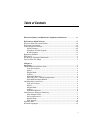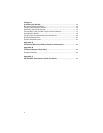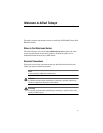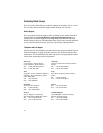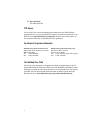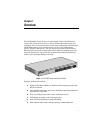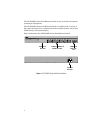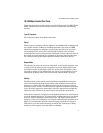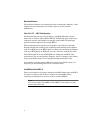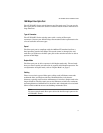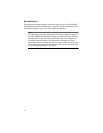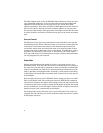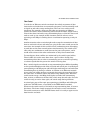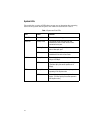AT-FS709FC Series Installation Guide
3
10/100 Mbps Twisted Pair Ports
The twisted pair ports on the switch are labelled 1X through 7X, 8MDI-X and
8MDI. The features of the twisted pair ports are explained in the following
sections.
Type of Connector
The twisted pair ports have RJ-45 connectors.
Speed
These ports are compliant with the 10Base-T and 100Base-TX standards and
are capable of either 10 Mbps or 100 Mbps operation. The ports are IEEE
802.3u Auto-negotiation-compliant, meaning the speed for each port is set
automatically by the switch after determining the speed of the end node
connected to the port. Auto-negotiation is designed to ensure that each port on
the switch and each end node are operating at the same speed and that they
are communicating at the highest possible common speed of the devices.
Duplex Mode
The twisted pair ports can operate in either half- or full-duplex operation. Just
as with speed, the ports use Auto-negotiation to set the duplex mode. If the
end node is capable of full-duplex mode, the port is set to full-duplex. If the
end node is capable of only half-duplex, the port is set to half-duplex. For an
explanation of duplex mode, refer to the section “Duplex Mode” on page 8.
Cabling
The RJ-45 ports on the switch can use shielded or unshielded twisted pair
cable. The categories of twisted pair cabling used in Ethernet networks are
Category 3, 4, and 5. The main difference between the categories relates to
their attenuation, which is a measurement of signal loss over the length of the
cable. All cables experience attenuation, where the signal loses strength the
longer the cable. The lower the loss of signal, the lower the attenuation.
Of the three categories, Category 3 has the highest attenuation, meaning that
it has the highest signal loss. It is adequate for 10 Mbps operation, but should
never be used for 100 Mbps network operations. The higher speed requires
Category 5. If you are installing a new network with end nodes operating at 10
Mbps, it is recommended that you install Category 5 instead of Category 3.
This will save you the trouble of having to install new twisted pair cabling
should you later upgrade your end nodes to 100 Mbps.



